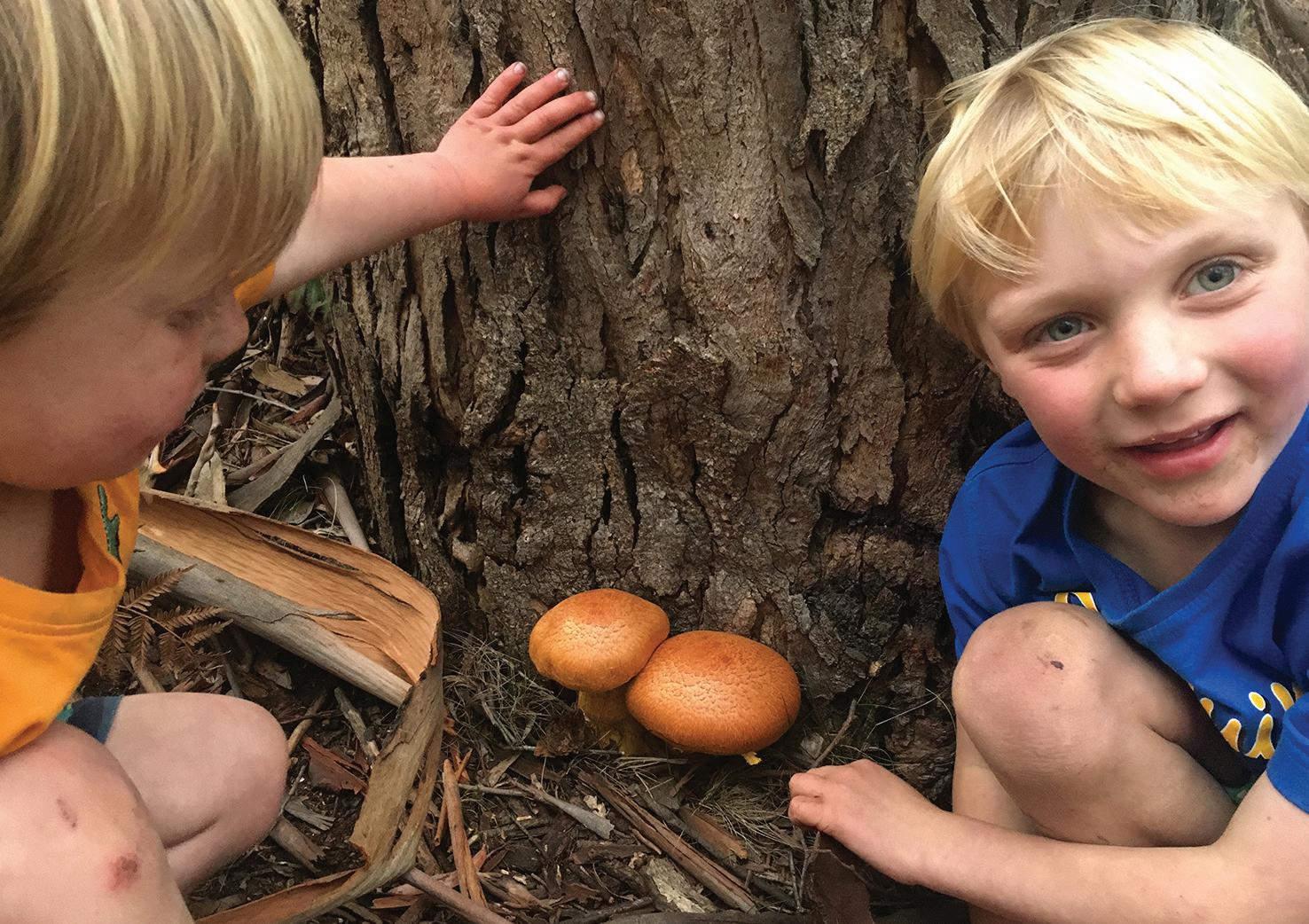Exploring the wonders of nature during lockdown V
olunteering with Bushcare is a great way to learn about Hobart’s bushland reserves and how to protect the native plants and animals that call them home, but it’s not the only way. The coronavirus clampdown forced many of us to come up with ways of caring for nature from our own homes, starting in backyards. Many of the weedy plants threatening Hobart’s bushlands originally came from gardens. What seems like a harmless plant on a visit to the nursery can turn into an environmental invader if it jumps your fence and escapes into nearby bushland. But by responsibly disposing of garden waste and removing environmental weeds from your garden you can help protect Hobart’s bushland reserves.
Where to start The Weeds of Southern Tasmania booklet can help you with the task of identifying these nasties. If you live in Fern Tree The Fern Tree Weed Booklet is for you. If you want to dig deeper into weed control methods and management strategies, take a look at the Tasmanian Government’s website and NRM South’s priority weed brochures.
Habitat gardens Using plants native to your region is a great way to turn your garden into a habitat sanctuary, providing food and shelter for birds and other wildlife as well as butterflies. NRM South has created an excellent native plants of Hobart Bandicoot Times
Ridgeway Bushcare regulars Ewan and Pippin discover a crop of Armillaria fungus while exploring nearby bushland. Photo: Bronwyn Kimber
Handy websites • L inks to all of the sources listed in this story can be found at hobartcity.com.au/carefornature. • The NRM South website is a great resource: nrmsouth.org.au
list that will help you find the right native plants for your garden. They have also created a fantastic Native Gardens guide.
Citizen science You don’t need a science degree to be a citizen scientist, just a curious nature and an enthusiasm for the natural world around us. By contributing your observations on nature to apps like iNaturalist, Fungimap and FrogID you can make a valuable contribution to our understanding of Hobart’s bushland reserves and the wildlife that rely on them for survival.
Rock gardens, nest boxes, bird baths, frog ponds and native bee hotels are also great ways of attracting native wildlife into your garden, and provide natural stepping stones between our bushland reserves.
Here are just a few programs you can get involved with:
Discover how to create a wildlife garden and encourage bush birds into your garden with NRM South’s wonderful Bush Birds brochure.
• Fairywren Project
7
• Wild Pollinator Count • Butterflies Australia • Fungimap • Aussie Backyard Bird Count • FrogID A more comprehensive list has been compiled by the Australian Citizen Science Association. Winter 2020 | No 77








